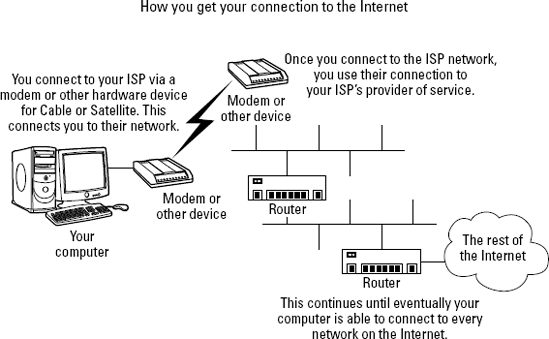4.2. Using an ISP
Essentially, the Internet is a large, routed network, with technology similar to the networks found in a large corporation. The main difference between the Internet and a corporate network, though, is that all the small networks that make up the Internet are conjoined, but corporate networks are kept private. To access the Internet, you must access one of the networks that are connected to the Internet. These networks are run by Internet service providers (ISPs), which are in place simply to allow you to access the Internet. Figure 4-1 illustrates how a connection to the Internet works. In order to get connected to the Internet, the following would occur:
Connect your computer to your ISP's network by using a communication device, such as a modem or router.
The ISP connects its network to its provider's network by using a router and a communication link, such as a leased Telco line.
Eventually, a connection is made to part of the Internet backbone, which allows connections to every network that is connected to the Internet.
Figure 4.1. How you connect to the Internet.

In addition to connection services, most ISPs provide other services, such as
E-mail addresses and message space on servers
Local news servers that replicate Usenet news groups
These are discussion groups for various topics in a bulletin board format.
Web page storage space
Most Internet access service ...
Get CompTIA A+® Certification All-In-One For Dummies®, 2nd Edition now with the O’Reilly learning platform.
O’Reilly members experience books, live events, courses curated by job role, and more from O’Reilly and nearly 200 top publishers.

